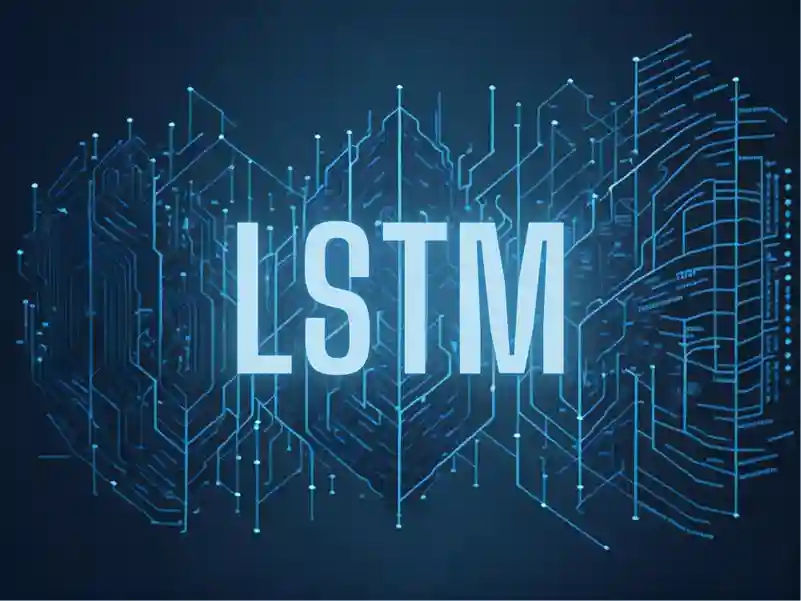Blogs / LSTM: Foresight in Deep Learning and Sequential Data Analysis
LSTM: Foresight in Deep Learning and Sequential Data Analysis

Introduction
In today’s world, sequential data plays a vital role across many domains—from weather forecasting to financial market analysis and language translation. One of the most advanced tools for analyzing such data is the Long Short-Term Memory (LSTM) network. LSTM is a type of Recurrent Neural Network (RNN) designed to learn long-term temporal dependencies. Thanks to its ability to model extended dependencies, it is widely used in applications like time series forecasting, natural language processing, and audio and visual data analysis.
In this article, we will explore the concept of LSTM, how it works, its broad applications, and the challenges it faces.
What Is an LSTM Network?
LSTM (Long Short-Term Memory) is a specialized form of Recurrent Neural Network (RNN) designed to overcome the difficulty RNNs have with long-term dependencies in sequential data. Standard RNNs tend to forget old information as time progresses. LSTM addresses this by introducing memory cells capable of retaining information for prolonged periods.
Key Components of an LSTM
1. Memory Cell:
The memory cell enables LSTM to store or selectively forget information over time.
2. LSTM Gates:
LSTM uses three primary gates:
- Input Gate: Decides which new information to write into the memory cell.
- Forget Gate: Determines which information to discard from the memory cell.
- Output Gate: Controls which information from the memory cell is sent to the output.
These gates together allow LSTM to manage information flow precisely and model complex temporal patterns.
How LSTM Works
At each time step, LSTM uses its gates and memory cell to decide which information to keep, update, or remove:
- Update the Memory Cell: Incorporate new input into the cell state.
- Forget Old Information: Remove irrelevant or outdated data.
- Generate Output: Pass the processed information to the next time step or final output.
This design enables LSTM to capture and leverage complex temporal dependencies effectively.
Applications of LSTM
1. Time Series Forecasting
A common use case is forecasting complex trends in data such as stock prices, temperature, or energy demand.
2. Natural Language Processing (NLP)
In NLP, LSTM powers machine translation, text generation, and sentiment analysis by learning long-range word dependencies to produce coherent text.
3. Speech and Audio Recognition
LSTM’s strength in sequential audio analysis makes it highly effective for speech recognition tasks.
4. Video and Image Sequence Analysis
In video data, each frame depends on the previous one. LSTM can model these dependencies to improve understanding of video sequences.
5. Traffic and Transportation Management
LSTM is used to predict traffic patterns, analyze transportation data, and optimize routing.
6. Recommender Systems
Platforms like Netflix and Amazon use LSTM to predict user behavior and deliver personalized recommendations.
Advantages of LSTM
1. Long-Term Dependency Modeling:
LSTM retains important information over extended sequences, unlike standard RNNs that often forget earlier inputs.
2. High Flexibility:
LSTM performs well across numeric, textual, audio, and visual data domains.
3. Stable Training:
The gating mechanisms address gradient instability issues (such as vanishing gradients) common in RNNs.
Challenges of LSTM
1. High Computational Complexity:
LSTM’s complex structure demands more computational resources than simpler models.
2. Large Data Requirements:
Accurate training often requires substantial volumes of sequential data.
3. Long Training Times:
Due to its complexity, LSTM can take considerable time to train.
4. Hyperparameter Tuning:
Finding optimal settings for layers, units, and other hyperparameters often involves extensive experimentation.
Alternatives to LSTM
Newer methods like GRU (Gated Recurrent Unit) and Transformer architectures offer efficient alternatives. GRU’s simpler design sometimes matches or exceeds LSTM performance.
Future of LSTM
With advances in deep learning architectures—such as Transformer and Attention Mechanisms—LSTM remains relevant, often combined with these newer models. Improved optimization algorithms will further boost LSTM efficiency.
Conclusion
LSTM represents a landmark in deep learning with unparalleled capabilities in modeling sequential data and forecasting complex trends. Its wide-ranging applications have made it a powerful tool for data scientists and AI engineers. Effective use of LSTM requires a deep understanding of its structure and challenges to achieve the best outcomes across projects.
✨
With DeepFa, AI is in your hands!!
🚀Welcome to DeepFa, where innovation and AI come together to transform the world of creativity and productivity!
- 🔥 Advanced language models: Leverage powerful models like Dalle, Stable Diffusion, Gemini 2.5 Pro, Claude 4.5, GPT-5, and more to create incredible content that captivates everyone.
- 🔥 Text-to-speech and vice versa: With our advanced technologies, easily convert your texts to speech or generate accurate and professional texts from speech.
- 🔥 Content creation and editing: Use our tools to create stunning texts, images, and videos, and craft content that stays memorable.
- 🔥 Data analysis and enterprise solutions: With our API platform, easily analyze complex data and implement key optimizations for your business.
✨ Enter a new world of possibilities with DeepFa! To explore our advanced services and tools, visit our website and take a step forward:
Explore Our ServicesDeepFa is with you to unleash your creativity to the fullest and elevate productivity to a new level using advanced AI tools. Now is the time to build the future together!